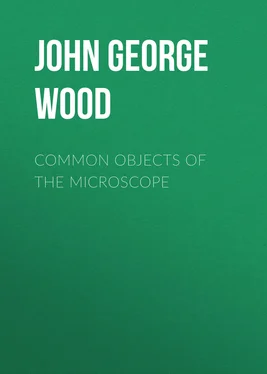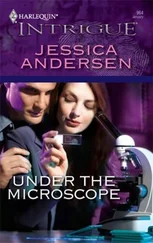John George Wood - Common Objects of the Microscope
Здесь есть возможность читать онлайн «John George Wood - Common Objects of the Microscope» — ознакомительный отрывок электронной книги совершенно бесплатно, а после прочтения отрывка купить полную версию. В некоторых случаях можно слушать аудио, скачать через торрент в формате fb2 и присутствует краткое содержание. Жанр: foreign_prose, foreign_antique, на английском языке. Описание произведения, (предисловие) а так же отзывы посетителей доступны на портале библиотеки ЛибКат.
- Название:Common Objects of the Microscope
- Автор:
- Жанр:
- Год:неизвестен
- ISBN:нет данных
- Рейтинг книги:4 / 5. Голосов: 1
-
Избранное:Добавить в избранное
- Отзывы:
-
Ваша оценка:
- 80
- 1
- 2
- 3
- 4
- 5
Common Objects of the Microscope: краткое содержание, описание и аннотация
Предлагаем к чтению аннотацию, описание, краткое содержание или предисловие (зависит от того, что написал сам автор книги «Common Objects of the Microscope»). Если вы не нашли необходимую информацию о книге — напишите в комментариях, мы постараемся отыскать её.
Common Objects of the Microscope — читать онлайн ознакомительный отрывок
Ниже представлен текст книги, разбитый по страницам. Система сохранения места последней прочитанной страницы, позволяет с удобством читать онлайн бесплатно книгу «Common Objects of the Microscope», без необходимости каждый раз заново искать на чём Вы остановились. Поставьте закладку, и сможете в любой момент перейти на страницу, на которой закончили чтение.
Интервал:
Закладка:
Work done with the concave mirror can, however, under the most favourable conditions, only be looked upon as a pis aller . The advantages gained by the use of some substage condenser, even the most simple, in conjunction with the plane mirror, or even without any mirror at all, are so manifold that the beginner is strongly urged to provide himself with some form or other of it, and we now proceed to describe the way in which this should be used to produce the best effect.
To reduce the problem to its most simple elements, turn the mirror altogether out of the way, and place the microscope upon a block at such a height as shall be convenient for observation, and shall allow the rays from the lamp, placed in a line with it on the table, to shine directly into the tube of the microscope. Ascertain that this is so by removing both objective and eye-piece and looking down the tube, when the flame should be seen in the centre, edgewise. Now replace the eye-piece, and screw on to the tube the one-inch combination or objective. Place upon the stage an object, preferably a round diatom or an echinus-spine, and focus it as sharply as possible. Now place the substage condenser in its jacket, and slide it up and down until the image of the object is bisected by the image of the flame.
The centre of the object will now be brilliantly illuminated by rays travelling in the proper direction for yielding the best results. The object is situated at the common focus of the microscope and the condenser, and, whatever means of illumination be adopted, this is the result which should always be aimed at.
Satisfactory as this critical arrangement is, however, from a scientific point of view, it has its drawbacks from an artistic and æsthetic one. It is not pleasant, for most purposes, to have merely the centre of an object lighted up, and we have now to consider how the image of the edge of the flame may be so expanded as to fill the field without sacrificing more than a very small fraction of the accuracy of the arrangement just attained.
Referring to Fig. 1, we see that if we place the lamp at the principal focus of a lens, it will emit a bundle of parallel rays equal in diameter to the diameter of the lens. This is the key of the position. We cannot place the lamp at an infinite distance from the substage condenser, but we can supply the latter with rays approximately parallel, so that it shall bring them to a focus upon the object at very nearly its own principal focus. This we do by means of the bull’s-eye condenser. Place the latter, with its flat side toward the edge of the flame, and at its principal focal distance (the method of determining which has already been described) from the latter, so that the bundle of parallel rays which issue from it may pass up to the substage condenser. On examining the object again, it will be found that, after slight adjustments of the position of the bull’s-eye have been made, the object lies in the centre of an evenly and brilliantly lighted field.
It may be necessary to place the bull’s-eye a little farther from or nearer to the lamp, or to move it a little to one side or the other, but when it is at the correct distance, and on the central line between the lamp and the substage condenser, at right angles to this line, the effects will be as described. It may help in securing this result if we mention that when the bull’s-eye is too far from the lamp, the image of the flame is a spindle-shaped one; whilst, when the distance between the two is too short, i.e. less than the principal focal length of the lens, the field is crossed by a bar or light, the ends of which are joined by a ring, whilst on either side of the bar there is a semi-circular dark space.
We have hitherto supposed the objects viewed to be transparent, but there are many, of great interest, which are opaque, and call for other means of illumination. Of these there are several. The simplest and, in many ways, the best is to use the bull’s-eye condenser to bring to a focus upon the object the rays of light from some source placed above the stage of the microscope. If light can be obtained from the sun itself, no lens will be needed to concentrate it; and indeed, if this were done, there would be considerable risk of burning the object. The light from a white cloud, however, with the help of the bull’s-eye, answers admirably. At night-time an artificial source of light, the more intense and the more distant the better, is required. For most cases, and with powers not higher than one inch, a good paraffin lamp, placed about two feet away from the stage, and on one side of it, so as to be about a foot above the level of the object, will give all that is needed. Such a lamp is shown in Fig. 14. Low magnifications are, as a rule, all that is called for in this method.
Lieberkuhn’s condensers are useful aids, but are somewhat expensive. They are concave mirrors, which are so adjusted to the objective that the latter and the reflector come into focus together, the light being sent in from below, or from one side.
One other method of illumination must be mentioned before leaving the topic, and this is the illumination of objects upon a “dark field.” With suitable subjects, and when carefully managed, there is no method which gives more beautiful effects, and it has the great advantage of allowing the object to be brilliantly lighted, without the strain to the eyes which is involved in such lighting by the usual method of direct illumination.
Fig. 14.
It consists essentially in allowing the light to fall upon the object from below, at such an angle that none of it can enter the objective directly. Thus the concave mirror, turned as far as possible to one side, and reflecting on to the object the rays from the lamp placed upon the opposite side, will give very fair results with low powers; this plan, however, is capable of but very limited application. Again, a disc of black paper may be stuck on to the middle of the bull’s-eye, and the latter be placed below the stage between it and the mirror. In this case everything depends upon the size of the disc, which, if too small, will not give a black ground, and if too large will cut off all light from the object.
The best and only really satisfactory plan is to arrange the illumination with the substage condenser, as previously described, and then to place below the lens of the latter a central stop of a suitable size, which can only be determined by trial. When this has been done the object will be seen brilliantly illuminated upon a field of velvety blackness. Such stops are supplied with the condenser.
We have devoted a considerable portion of space to this question, since it is, of all others, the most important to a successful, satisfactory, and reliable manipulation of the microscope; but even now, only the main points of the subject have been touched upon, and the worker will find it necessary to supplement the information given by actual experiment. A few failures, rightly considered, will afford a great amount of information, but those who desire to go thoroughly into the matter are recommended to consult the present writer’s Guide to the Science of Photomicrography , where it is treated at much greater length, as an essential part of the subject-matter of the book.
It may be added here, that no method of reproducing the images of objects is on the whole so satisfactory as the photographic one; and whilst a lengthened reference to the topic would be out of place in a work of the character of the present one, the one just mentioned will be found to contain all that is necessary to enable the beginner to produce results which, for faithfulness and beauty, far excel any drawing, whilst they have the additional advantage that they can, if required, be exhibited to hundreds simultaneously.
CHAPTER IV
Интервал:
Закладка:
Похожие книги на «Common Objects of the Microscope»
Представляем Вашему вниманию похожие книги на «Common Objects of the Microscope» списком для выбора. Мы отобрали схожую по названию и смыслу литературу в надежде предоставить читателям больше вариантов отыскать новые, интересные, ещё непрочитанные произведения.
Обсуждение, отзывы о книге «Common Objects of the Microscope» и просто собственные мнения читателей. Оставьте ваши комментарии, напишите, что Вы думаете о произведении, его смысле или главных героях. Укажите что конкретно понравилось, а что нет, и почему Вы так считаете.












